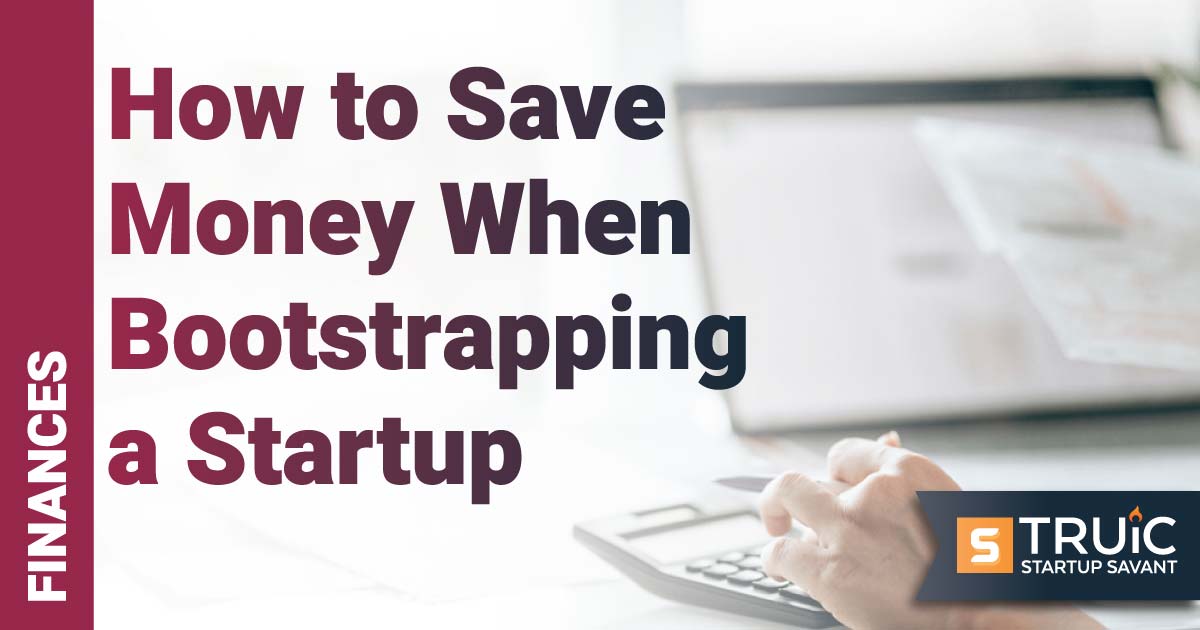How to Save Money When Bootstrapping a Startup

Last Updated: By TRUiC Team
We so often equate the concept of a startup with external funding that it's easy to forget that there are many startups that, in their initial days, didn’t have venture capital to fall back on. Instead, these startups are self-funded with personal savings, investments from family and friends, or profit from initial sales. This is what's referred to as bootstrapping.
While bootstrapping your startup might be the easiest way to get it off the ground, it is a huge risk. To mitigate this risk, bootstrapped startup founders need to make their dollars work for them.
Also Recommended: Explore more startup funding options!
Ways Founders Can Save Money Bootstrapping a Startup
For startup founders, especially those that are bootstrapping, the term “runway” doesn't refer to that place at an airport we see on takeoff or landing. Rather, it defines the amount of financial leeway you have before your startup essentially goes bankrupt.
Experts say that most seed-stage startups need at least 12 to 18 months' worth of runway to take off, so it is imperative that founders stretch out that initial bootstrapped funding as far as possible. We've sourced some of the most innovative ways to maximize your startup dollars.
1. Create a Budget
As with any venture involving finances, budgeting is crucial to the success of your startup. You need to know, upfront, where your limited funds are going to be allocated so that you make good decisions and avoid surprise expenses. Prior to launching, a budget will be your planning tool, and after your startup is off the ground, that same budget will become an analytical measurement of your progress.
When developing a budget for your bootstrapped startup, it's always best to be conservative about income projections and overestimate expenses. This will give you far more leeway in sticking to your budget.
2. Start Small
Getting a startup off the ground is difficult enough, but if you aren't willing to start small and grow over time, you may quickly find yourself at the end of the runway. Be realistic about what you can expect to achieve in the first year or so, and don't put all of your irons in the fire at once. Just because you have seven amazing product lines in mind doesn't mean you have to start off with all of them at once. Instead, pick one or two of the most innovative ideas and focus your energies (and money).
3. Spend Wisely With Incorporation Services
Starting a business can be a minefield of paperwork, registrations, and bureaucratic red tape. While it might be tempting to attempt to navigate business incorporation on your own, unless you've done it before, we don't recommend it. In fact, you may be more likely to spend more money (and time) attempting to set up all the requirements yourself than if you just hired an incorporation service to handle it for you.
4. Hire Freelancer
Building your startup team is a vital consideration, but it also shouldn't break the bank. For really important and permanent roles, definitely invest in the best quality team members you can afford, but for everything else, freelancers are the way to go in the beginning.
With 28% of the US workforce now freelancing permanently, you can find a freelancer in almost any field of work, offering you flexibility and lower total overheads.
Recommended: Find freelance talent through Fiverr!
5. Pay Off Debt
In your efforts to get off the runway, debt is like a boulder shackled to the neck of your startup. For bootstrapping startup founders, unfortunately, debt is often part of the package, but it's vital to ensure you stay on top of it.
If you have to choose between paying off debt and allocating funds for growth, always pick the former until that debt is paid off. You'll not only save money on interest by settling your debt quicker, but you'll increase the likelihood that future investors will see you as a well-managed prospect.
6. Only Spend Money on Essentials
If you're starting out with the picture of a high-flying startup founder complete with fancy equipment and luxury offices in mind, you might be setting yourself up for failure. In the mid-1990s, when Amazon was getting off the ground, Jeff Bezos built his teams' desks out of doors and four-by-fours. The company still lists frugality as one of its 14 core values.
7. Use Free or Low-Cost Tools and Resources
While we're talking about saving money, as a bootstrapper, you will most certainly want to take advantage of as many free and low-cost tools and resources as you can find. Tools such as Google Workspace, TRUiC Business Plan Generator, GoDaddy, and ADP can be game-changers when you're just starting out, and they won't blow the budget.
8. Go Remote or Hybrid
Fixed operating costs are one of the biggest expenses your bootstrapped startup will encounter. One of the easiest ways to reduce this cost, though, is to have your team work remotely or in a hybrid model. Remote working is being embraced far more widely than ever before by both businesses and employees, and by not restricting yourself to a physical space, you also open up your hiring options to a far greater pool of prospects.


